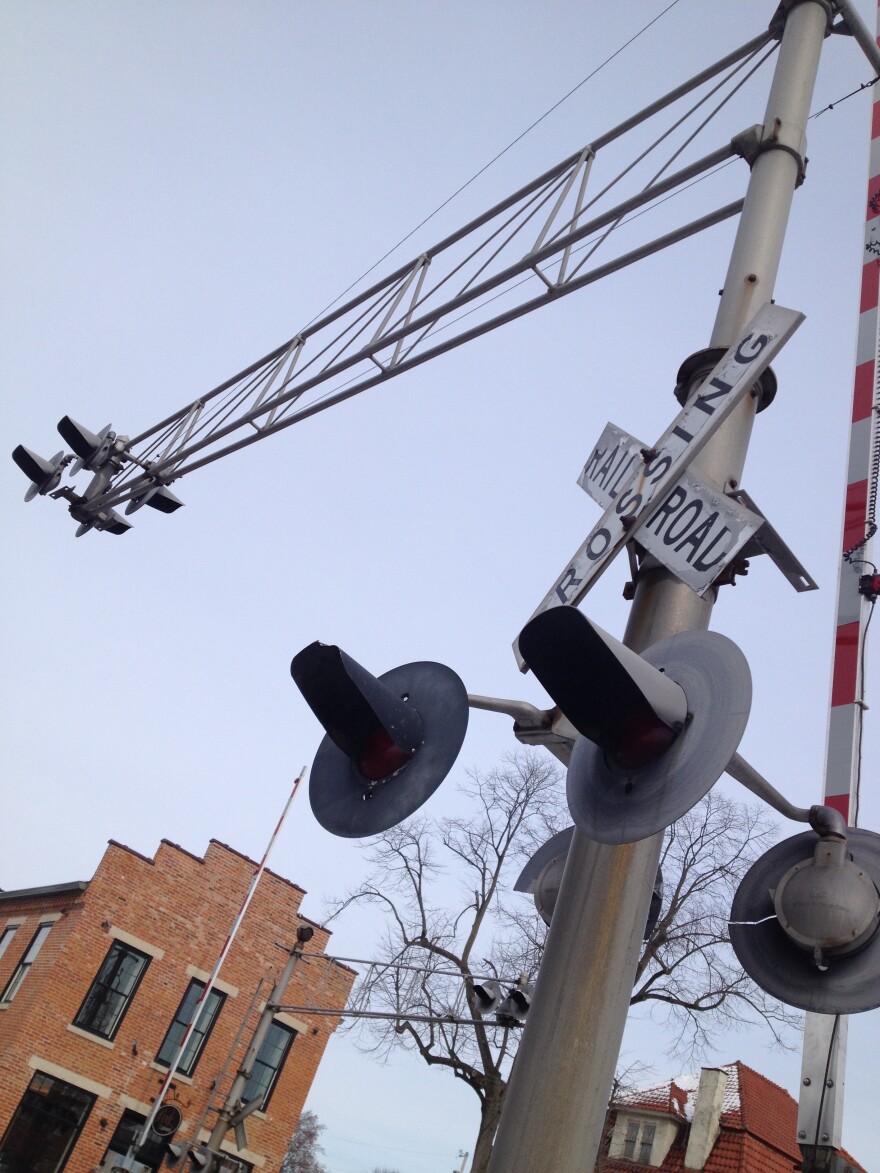Lyle Whybrew has lived his whole life to the sounds of passing trains. He grew up in North Judson, Indiana, a town where four railroad lines converged, and now he’s in Tipp City. We meet at Sam and Ethel’s, a restaurant just blocks from the railroad crossing. For a decade he’s asked everyone he can think of: what’s in those trains? Finally, he brought the question to WYSO Curious.
“I’ve gone to train experts, and they don’t know,” he says. “I have a — what do you call a cousin’s husband? Is that a cousin-in-law? — Louie works for CSX in Indiana, he doesn’t know. I’ve put it on Facebook, I’ve put out emails.”
“So we’re sort of your last resort, then?” I ask.
“No,” he tells me, with confidence. “You’re my best resort.”
Railfans have a guess
With this endorsement, I’m on board to find some answers. One of my first Google searches turns up these people called “rail fans,” who seem like they might have a clue. I get on the horn with Elmer Thomas, who operates the Facebook page for the Northeast Ohio Railfans. Elmer tells me a railfan is a sort of hybrid of a train enthusiast and a bird watcher.
“It’s a hobby, and it’s a passion,” he says. “You go fishing, you throw your line in the water, and you hope to catch a fish. We sit along the tracks and, instead of throwing a line out we have a camera, in the hopes of catching, or photographing, a train.”
He spends a few hours trackside each day, and though he’s mostly concerned with what’s on the outsides of the trains, he does know something about the freight they carry inside. CSX Corporation operates 4,000 miles of track in Ohio, including the line that goes through Tipp City. He guesses it includes cars, coal and Coca-Cola.
“That’s not something the railroads have to disclose”
I’m gathering some steam with this information, but Lyle asked WYSO Curious about what runs through Tipp City specifically. So I keep chugging along, and reach out to Julie Kaercher at the Ohio Rail Development Commission.
“I receive a lot of phone calls from the public,” Kaercher says. She hears from people like me and Lyle daily. “The topics range from what is being carried on our tracks, which is a little bit more difficult to answer for them, and we try, but that’s not something the railroads have to disclose to us.”

But there must be some exceptions there, right? Turns out, rail tank cars carrying 1,000 pounds or more of hazardous materials do have to have those diamond-shaped hazmat placards, which are labeled with a four-digit UN code identifying the type of material inside. In May of 2014, the Department of Transportation issued an emergency order requiring train companies to notify the state when they’re carrying 1,000,000 gallons or more of crude oil from the Bakken Shale. That’s the oil that’s led to catastrophic explosions in Quebec, North Dakota, Alabama and, most recently, West Virginia.
But outside of these disclosures for hazardous materials, even state and federal agencies don’t necessarily know what a train is carrying at a given time.
“It’s like asking what’s running on a highway,” says Matt Dietrich, the Ohio Rail Development Commission’s executive director. “So it’s very hard to pin down what’s running on a certain line, because anything could be running.”
Disillusioned with train companies
I’m a little disappointed by these answers, but I’m not ready to be derailed just yet. So I reach out to my last hope, the CSX Corporation itself. The company declines an interview, but does throw me a bone: a document that specifies the kinds of commodities likely to run through Tipp City.
I meet back up with Lyle and read him the list: “Products shipped within Ohio include containerized consumer goods, coal, light trucks, iron ore and passenger vehicles.”
And I tell him that the companies don’t have to tell us exactly what’s on those trains.
“How does that answer strike you?” I ask.
“Typical,” he says.
Lyle’s actually kind of disillusioned with train companies. “Basically,” he says, “and forgive me for saying this, they could care less how their speed, how their sound, anything, affects the community.”
We both agree there is only one way we could know for sure what’s on a given set of tracks.
“In an ideal world,” I tell him, “I’d find the guys who loaded it onto the train.”
“But they have work to do,” says Lyle. “They have work to do, and they don’t have time to talk to those of us who are just curious.”
WYSO Curious is our series driven by your questions and curiosities about the Miami Valley. Is there something you’ve always wondered about the Miami Valley’s history, people, culture, economy, politics or environment? Send in a question now, and check back to see which questions we’re considering. WYSO Curious is a partner of Hearken, founded by Jennifer Brandel.
_







